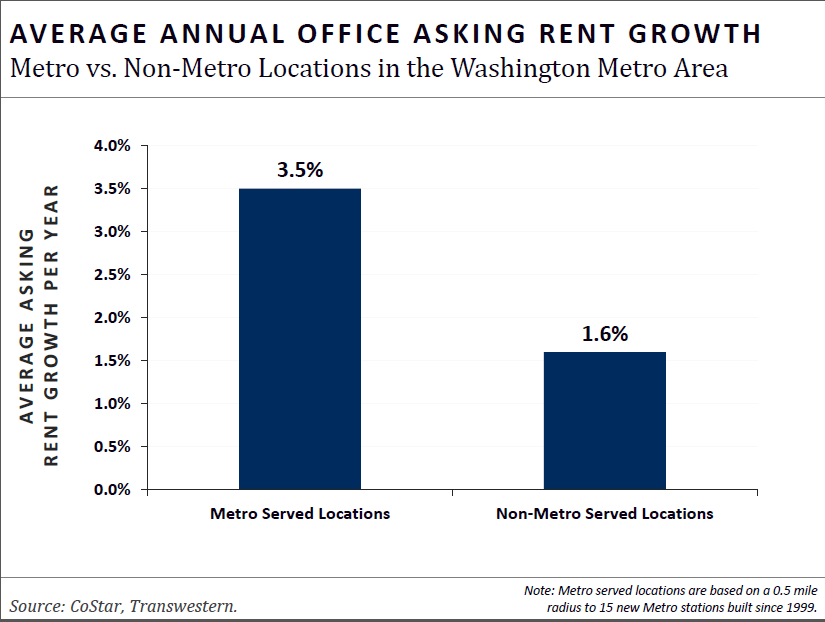Transit-Oriented Development’s Return on Investment
For at least the past decade, the region’s real estate has revolved around transit. That is expected to continue for the next decade, and we can already see signs of its impact along the Silver Line, according to a new report.
We’ve been highlighting the impact that Metro has on the regional economy for many years now. From the Regional Benefits of Transit study which highlighted the quarter of a billion dollars in incremental tax revenue that the jurisdictions enjoy each year solely because of Metro, to recent data which highlights that almost all of the development pipeline in the D.C. region is within walking distance of Metrorail, it’s crystal clear that this region’s economic future is inextricably linked to Metro.
Joining the library of compelling evidence of this is recent information from CoStar and Transwestern. They have been monitoring the development pipeline and activity in the region and have had a special eye trained on the Silver Line. Here’s what they found:
- From 2015 to 2040, a total of 70,000 office using jobs are projected to be added to the four submarkets impacted by the new Silver Line Metro stations. 61% of these jobs are expected to be within a half mile of the new Metro stations. Most of this growth is due to occur from 2015 to 2030, as 75% of new office using jobs are expected to be added during this period.
- Most office using job growth will occur within a half mile of the new Metro stations, with the exception of the stations located in the Route 28 North submarket.
- Of the 14.0 million square feet of office demand projected for the four submarkets from 2015 to 2040, 8.5 million square feet is expected surrounding the Metro stations. Tysons Corner is expected to experience the greatest office demand during this period.
Check out these forecasts and more in the Transwestern white paper, The Silver Line: Economic and Office Market Impact, 2015 – 2040.
What do you think this means for the future of Transit-Oriented Development in the region? What do you think this means for our need to invest in Metro overall?



Recent Comments